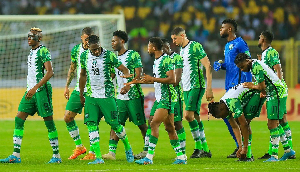*IMANI Alert: Ghana Governments in Investment Chaos*
**
So that there is no room for ambiguity, we want to repeat that we support
this and previous governments’ strategy of using public - private
partnerships (PPPs)as a principal means of delivering major
development-related capital investments.
We think PPPs offer an elegant and powerful approach of leveraging the
profit-seeking impulses of private actors for public benefit through
increased financial support for the provision of public goods like roads,
utilities, schools and hospitals.
Since the mid-90s when plans for outright privatisation of major development
infrastructure were bungled through the overreaching zeal of immature
technocrats, we have as a nation come round to the belief that even those
areas once held to belong to the exclusive jurisdiction of governments can
do with some private sector efficiency.
We have thus sought to marry our long-term development agenda to the
medium-term “return on investment” focus of major institutional and
so-called “strategic” investors.
Slowly has our thinking evolved, but it would seem that our attitudes remain
unchanged.
Governments in Ghana and their bureaucratic sidekicks continue to overreach
in objectives, under-price risk, over-state outcomes, under-perform on
timelines, over-manage processes, and under-benchmark important
milestones.Worst of all, they proceed to use PPPs in an arbitrary,
“buga-buga” fashion
that fails to build on the efforts of past governments. There has been no
institutional learning and no clear purpose or direction in much touted
reforms. From the mid-90s to date, these “deals” have been shrouded in
secrecy and steeped in contempt for public curiosity.
If you think we are just huffing and puffing, consider the following two
examples.
*The Western Rail Project*
**
Like most independent observers who monitor government policy, we were
alarmed when we heard a political bigshot at the Ministry of Finance
claiming recently that the Chinese “framework agreements” that Government of
Ghana recently entered into paves the ground for Chinese investment in the
vaunted “western rail project” and the hubris-drenched Ghana-Burkina rail
corridor (aka “Tema to Paga”!).
We were alarmed because that is the tenth or eleventh PPP policy announced
by successive governments regarding either or both projects.
Our fear is that our politicians are making this very important program up
as they go along, with scant regard for any of the due processes of
policymaking.
Soon after the announcement by the political boss, another big kahuna from
the same Ministry disclosed that Goldman Sachs was interested in funding the
western rail project to the tune of $500 million. And that was the end.
Nothing comprehensive has been published and shared with the relevant
agencies and independent organisations in this country about how these
various PPP initiatives involving multiple partners in respect of the same
project are being coordinated.
And we have cause to worry.
It is this same western rail project that was supposedly awarded to a
company called the Kampac Group on a Build-Operate-Transfer (BOT) basis
worth a reported $1.6 billion in 2008 (note the penchance for bandying huge
figures around). Indeed a close inspection of the contract, as announced,
will show that several components of the north-south, trans-Ghana, railway
project were envisaged under this deal.
Kampac Group, which does not have any verifiable track record in securing
such huge sums of money and delivering such large projects anywhere in the
world, subsequently announced that it had also acquired mineral concessions
worth more than $2 billion in the Western region as part of the financing
mechanism for the project. Government of Ghana denied complicity in this
contorted arrangement, and nothing has been heard of the $1.6 billion since.
Indeed, regarding the ambitious Tema – Paga railway project, which as far as
we are concerned is far from validated on a “return on investment” basis, a
German company called RailOne announced in 2007, prior to the official award
of the BOT deal to Kampac, that it had already concluded a supply agreement
with the Dubai-based company to provide materiel for the same project.
At the time these wide-ranging arrangements were being consummated, various
proposals from the Government of Ghana related to the same projects were
pending before a dazzling array of Chinese and Indian state and private
institutions, as well as multilateral financial institutions, such as the
African Development Bank.
Indeed, immediately prior to the Kampac undertaking, the same GK Holdings
that is today championing the STX deal entered into an understanding with
the Government of Ghana to source $2 billion from Korean strategic investors
to integrate the eastern railway corridor into the proposed trans-Ghana rail
system to be anchored at Tema. It was this grandiose scheme that, after its
2-year timeline had expired, was recycled to form the base of the Kampac
deal, and which today we are being told shall be funded with Chinese money.
We seem as a nation mastered the choreography of endlessly shifting between
Arab, Korean, Indian, and Chinese money that never materialises even as
senior management time and significant quantities of aid money are
squandered on self-serving, ivory-tower, consultancy projects. Yes, as a
country that is manifestly short of funds for our own development it makes
sense not to put all our eggs in one basket, but you can only diversify
fund-raising if you pursue a well-articulated, consistent, strategy.
Otherwise, you risk looking like a flake, and blowing what little
credibility you have left through under-performance on your covenants.
As you might have guessed the European Union and the World Bank have all in
recent years provided funds to assist this country develop a credible
program for the revitalisation of the railway network. A number of mining
companies, especially in the Western Region, have demonstrated a readiness
to buy significant commercial services from a credible railway contractor as
a way out of their traumatic dependency on the dilapidated road network.
Instead of focusing on integrating clear points of infrastructure need in
the chief agricultural and mining belts in order to raise realistic sums of
money to actually jumpstart the process, and thus increase the confidence of
prospective investors, every time our political leaders don their wellington
boots and descend upon the railway tracks they lose their financial bearings
and begin to fantasise about levitating high-speed locomotives and
retractable, air-suspended, tracks.
If, for instance, there is a strong case for trans-border trade between
Burkina Faso and Ghana, and we suspect there is, one must focus on clear,
high impact, connections within the trade belts themselves and assume that
at certain points, river and road transport shall complement. The idea
should clearly be about clear and observable improvements in efficiency so
as to justify to investors that the opportunity is profitable and not some
fantastic wholesale transformation of Ghana’s transport infrastructure over
2 years.
Clearly, this habit of jumping from one potential funder to the other,
waving giant figures in the air and cawing on about how delightful it would
be to unite the crocodiles in Paga with the shrimps in Tema isn’t going to
strengthen the confidence of prospective investors in Ghana’s PPP railway
program.
*Jubilee Field Gas Project*
**
Granted, the Jubilee Field gas project does not have as colourful a history
as the trans-Ghana railway project, with its various sub-incarnations in the
eastern and western corridors, inland ports near Kumasi, and crocodile ponds
near Paga etc, but it still fits quite closely in the same mould of
disjointed, disconnected, and disorganised PPP policymaking that we have
seen in this country for a decade and half.
In late 2009 the financial press was saturated with reports that Government
of Ghana (GoG) had concluded a deal with Oando PLC of Nigeria for the latter
to fund and exploit associated gas from the Jubilee Field in a deal worth a
more than $1 billion. Six months down the line GoG announced that Technip
had consented to finance and construct the pipeline from the offshore
reserves to a yet to be completed processing facility onshore, in Jomoro.
The masterplan envisages the pumping of treated gas to power stations in
Effasu and Takoradi, amongst others.
It has been nearly six months now and there is absolutely no clarity how the
Jubilee Field gas infrastructure development program is proceeding. Yet,
Government of Ghana policy remains committed to a policy of zero-tolerance
for flaring. How can that be achieved if the infrastructure to cart the gas
away from the field is still shrouded in financing mystery?
*Conclusion*
The conclusion is very straightforward: we should get our act together,
think more like a country confronted with real-world constraints and stop
fantasizing about grandiose schemes that never materialises. Projects like
the STX-Gog one detract from our global investment push. We now hear that
the promoters of STX are wandering all over Europe and America essentially
pleading with prospective sub-contractors to come and handle a piece of the
pie that is now choking them. A Minister of State was recently overheard
soliciting $600 million from a so-called “investment group” from the Gulf
for a project that was supposedly pre-financed. It is now clear that it is
not Woori bank or the Korean government that shall be funding the grandiose
$10 billion project. Why then the kikikiki?
The same problem afflicts the myriads of projects piling up in the infant
oil industry. The sooner Government of Ghana gets real, the better it shall
be for all of us.
* Courtesy of IMANI-Ghana (www.imanighana.org) & AfricanLiberty.Org*
Business News of Sunday, 24 October 2010
Source: IMANI












